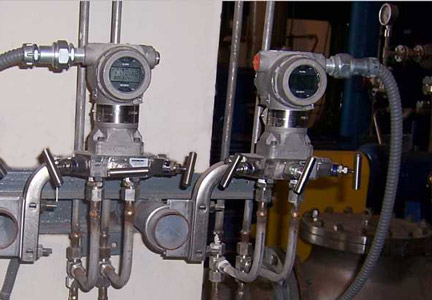
Pressure Sensor
Sometimes output signal of the pressure sensor is unstable, which expressed as the pressure sensor indication to be high or low. Problems with the peripheral accessories of the pressure sensor and the sensor itself will cause this phenomenon. This article will share the methods and techniques for troubleshooting such faults as well as analyze the calibration calculations for pressure sensor zero drift and range upper limit tolerance.
This article describes how to calibrate piezoresistive pressure transmitters and differential pressure transmitters. The calibration process includes preparation work, equipment connection, and pre-boost. In addition, this paper also introduces the problems that may occur in the pressure transducer and differential pressure transducer during the calibration process and the corresponding solutions.
The differential pressure sensor has strict requirements in the daily use and maintenance. Only follow the standard installation and maintenance requirements, the differential pressure sensor can operate normally. This article describes the six items that need to be paid attention to in the application of differential pressure sensors to help users use the products correctly.


lBoth pressure sensors and measured medium are inevitably affected by external interference factors, so they are in the interfered environment at the same time. Because the pressure sensor acquires relevant information by direct or indirect contact with the measurement medium. This requires some anti-interference measures to improve the anti-jamming capability of the pressure sensor. If the anti-interference ability of the pressure sensor is not too hard, its application range will be greatly limited, and the value of use will greatly reduce. Therefore, research and mastering the anti- interference measures of pressure sensors is a problem that cannot be ignored.




With the development of mechanical automation technology, the demand for pressure transducers on the market is also growing. Therefore, there are more and more manufacturers of pressure transducers. When the user selecting the pressure transducer, it is difficult to distinguish the high performance and the inferior performance of the pressure transducer without mastering some technical expertise. This article will describe how to judge the performance of a pressure transducer.
It is very necessary to research the installation before the pressure sensor is officially put into operation. In order to make the pressure sensor reach the measurement accuracy, in addition to the correct selection and calibration, it is also necessary to pay attention to the correct installation of the entire system. The correct system installation includes the opening position of the pressure inlet, the proper laying of the connecting duct, and the mounting position of the meter.
To achieve high accuracy of the pressure sensor, the error must be reasonable, so the error calibration for the pressure sensor is the key point. Pressure sensors mainly have offset error, sensitivity error, linear error and hysteresis error. This paper will introduce the mechanism of these four kinds of errors and the calibration method to reduce the error.
When we select a pressure sensor, we may consider the following questions: Which type of pressure sensor should I choose to meet requirements? Which specifications are the most important? What conditions should I consider? This involves the selection of pressure sensors. The principle of selection is to buy pressure sensors that meet their application, measuring range, accuracy requirements, temperature range, stability, and other requirements with the most economical price. This article describes the 10 key points in the pressure sensor selection.
